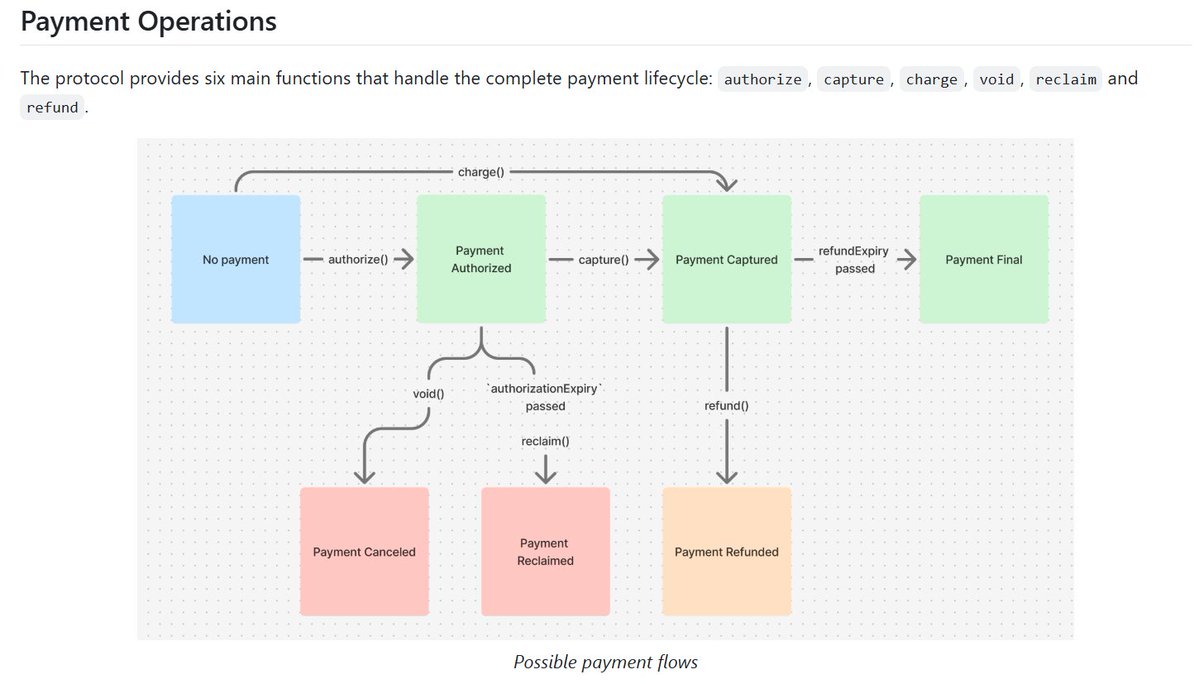> The @Base Commerce Protocol offers a glimpse into a new payment architecture: one that is transparent, programmable, and structurally more efficient than what we’ve relied on for decades.
@FredaDuan breaks down the Commerce Payments Protocol and how it can help bring the world onchain
Just spent time digging into the Commerce Payments Protocol—and honestly, it’s kind of mind-blowing. Crypto rails have quietly solved most of the pain points that kept them out of mainstream commerce.
This isn’t a demo or a theory—it’s live, open-source, and processing real transactions. Crypto payments are here.
1/ Instant “yes/no” authorization. Merchants need a clean answer: should I ship this item?
On-chain, that’s trivial. The protocol gives an immediate Authorized response by calling authorize(), which either succeeds or reverts. No ambiguity; just deterministic, programmable logic.
2/ Irrevocable or network-guaranteed funds
With traditional cards, “authorization” places a hold—it’s a promise, not a payment. In Base’s USDC rail, the authorize() call immediately moves the exact amount into an escrow smart contract. Funds can only be released via capture, refund, or void—no one can claw it back.
It replaces the idea of a credit hold with a “debit hold”: the buyer’s balance is reduced instantly, but the merchant can’t spend it until capture. The process mirrors the card system’s two-step flow, just enforced by smart contracts instead of centralized rules.
If a buyer doesn’t have enough USDC, transferWithAuthorization() reverts with transfer amount exceeds balance. No partials. No overdrafts. Just a hard stop—exactly like card error code 51: insufficient funds or credit limit.
3/ Shopper protection, restructured
Unlike cards—where issuers offer buyer protections—crypto-native payments move that responsibility to the PSP or wallet layer.
The Base Commerce Protocol supports refund() calls, using either the merchant’s wallet balance or, if necessary, the PSP’s own risk reserves.
So protection still exists—it’s just no longer mandated by regulation. It’s contractual, balance-sheet backed.
Example:
Day 0: Buyer pays → USDC enters merchant escrow.
Day 10: Product doesn’t arrive → Buyer disputes → PSP calls refund() → Funds pulled from merchant.
Day 65: Merchant ghosted → Wallet empty → PSP uses risk pool.
Day 91: Refund window expired → On-chain refund no longer possible → PSP may offer credit, or buyer pursues legal recourse or a Circle freeze.
4/ Ubiquitous tooling and UX
One challenge remains: frictionless funding.
Today, stablecoin payments still require buyers to source USDC, hold it, and manage ETH for gas. That’s a UX burden—but one that’s solvable.
Smart wallet abstractions already can make this feel like a debit account. A credit-style overlay—built by $Coin, $Shop, or MoonPay’s new stablecoin card—could close the last usability gap, giving crypto rails parity with cards on the one thing they still lag: seamless funding at checkout.
+++
This challenged a lot of what I thought I knew about payments.
I’m genuinely impressed by the ecosystem that’s taken shape—much of it just in the last few months, as regulatory clarity started to emerge.
The Base Commerce Protocol offers a glimpse into a new payment architecture: one that is transparent, programmable, and structurally more efficient than what we’ve relied on for decades.
With steady progress in wallet UX, credit overlays, and fiat onramps, crypto for commerce might arrive much sooner than expected.
Never underestimate what an open-source, programmable system can unlock.
+++
+++
More here:

6.62K
17
The content on this page is provided by third parties. Unless otherwise stated, OKX is not the author of the cited article(s) and does not claim any copyright in the materials. The content is provided for informational purposes only and does not represent the views of OKX. It is not intended to be an endorsement of any kind and should not be considered investment advice or a solicitation to buy or sell digital assets. To the extent generative AI is utilized to provide summaries or other information, such AI generated content may be inaccurate or inconsistent. Please read the linked article for more details and information. OKX is not responsible for content hosted on third party sites. Digital asset holdings, including stablecoins and NFTs, involve a high degree of risk and can fluctuate greatly. You should carefully consider whether trading or holding digital assets is suitable for you in light of your financial condition.


